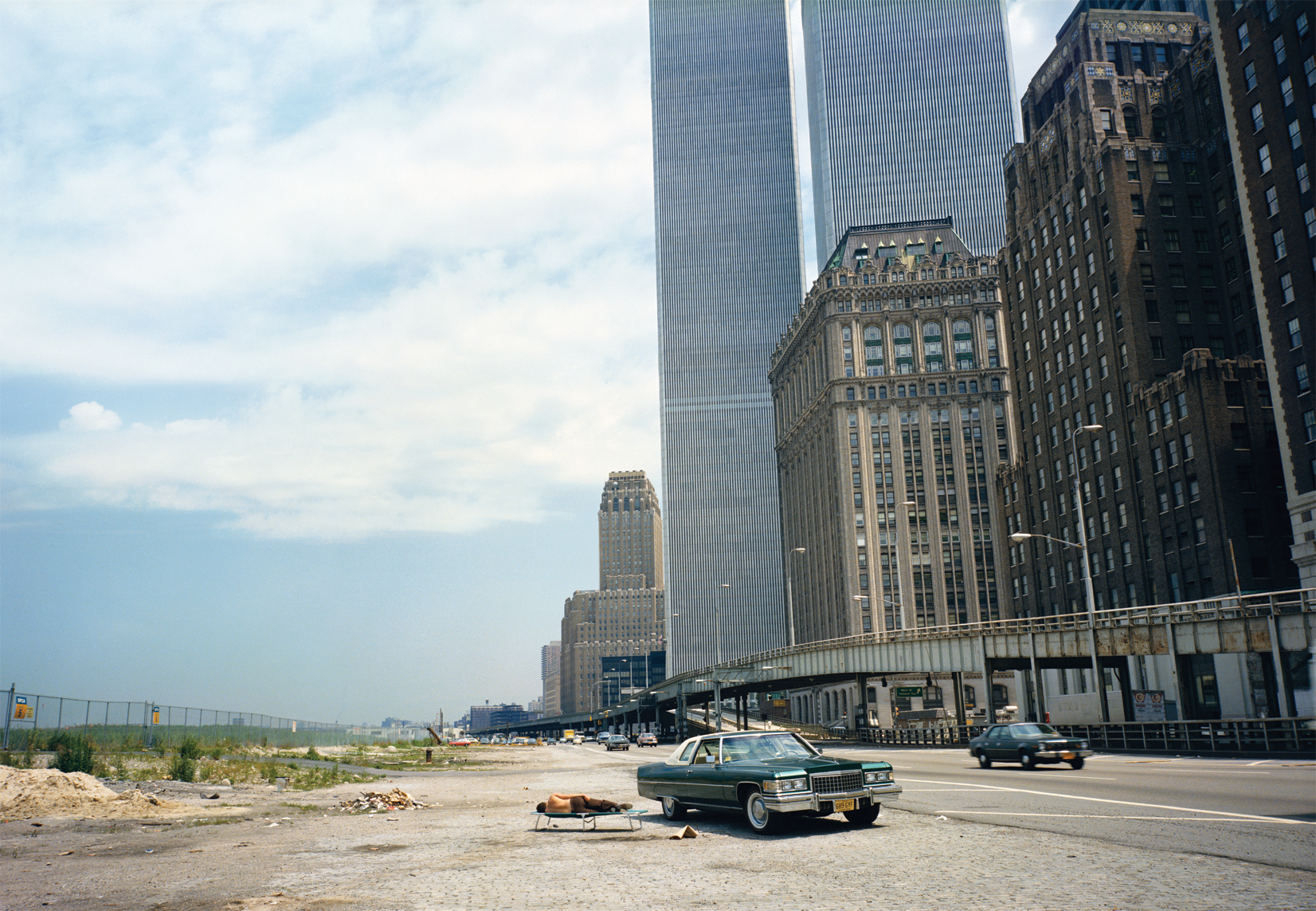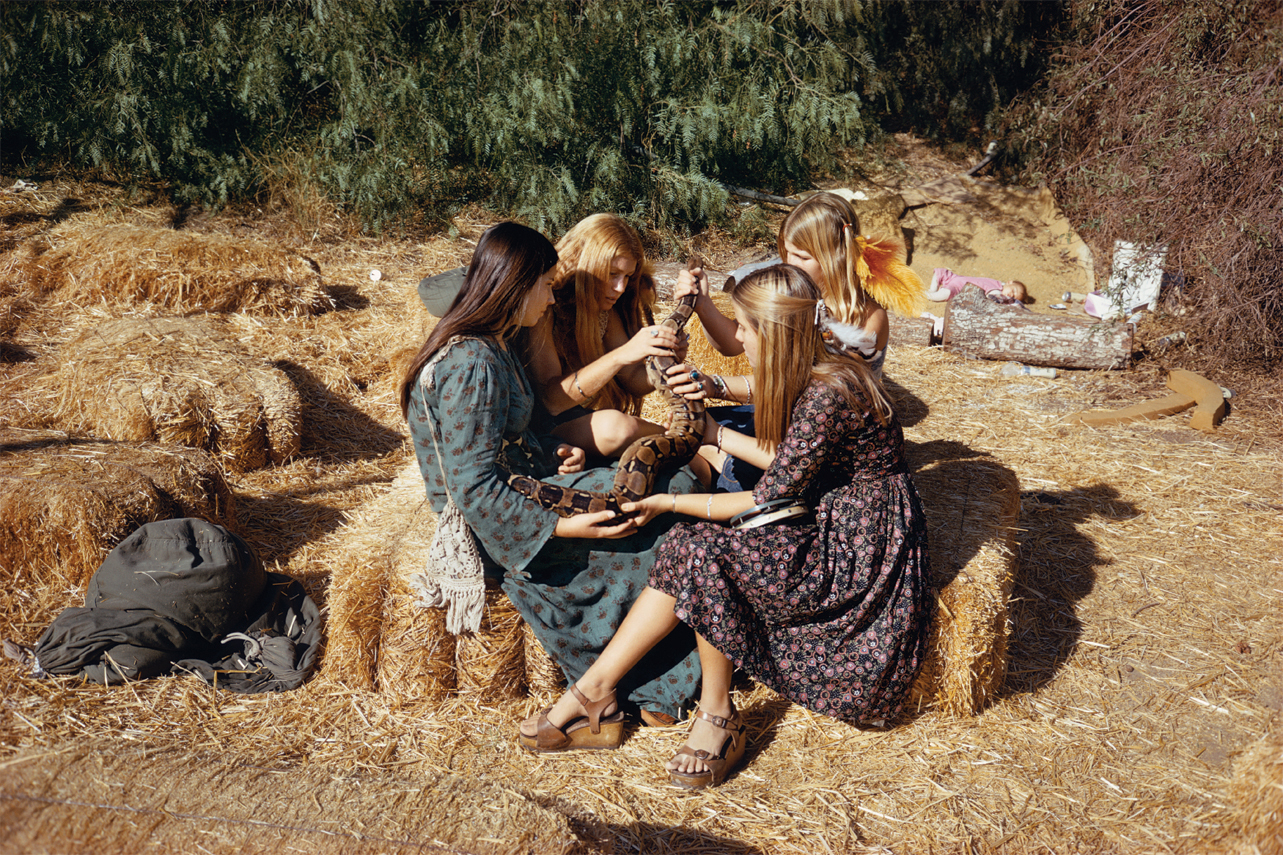For 50 years, photographer Mitch Epstein ’70 has exposed the American psyche in pictures. Here, he tells the story behind three shots from his newly reissued book, Recreation, and how it all began with the Williston Log.
Mitch Epstein’s 17 acclaimed books have established him as one of the country’s premier fine-art photographers, renowned for images that challenge our assumptions. But the first book Epstein edited may have been his most overtly radical: the 1970 Williston Academy yearbook, The Log.
Growing up in Holyoke, Massachusetts, Epstein arrived at Williston as a sophomore in 1968, discovering a boarding-school culture that seemed at odds with the idealism sweeping the country. “The times we were living in were about asking questions,” explains Epstein, now a New Yorker whose photographs can be found in the city’s Museum of Modern Art, Metropolitan Museum of Art, and Whitney Museum of American Art, and dozens of other collections around the world. “I was interested in doing something with the yearbook that would step away from the traditional.”
Epstein sought out English teacher and amateur photographer Stephen Seybolt ’58 as a mentor for an independent study in photography, took art classes with noted illustrator Barry Moser, and then brought his new thinking to The Log. The result was a dramatic departure from what had been done in years past, both visually and editorially, replacing the customary staid headshots with environmental portraits, gritty uncaptioned street photography, and free-spirited images of campus life. “I rocked a lot of boats,” says Epstein, who recalls being sent to Headmaster Phillips Stevens to explain his work. “Maybe it was my way of responding to what I felt needed to be broken down and re-created about the school.”
Epstein would continue to push barriers after Williston. After attending Union College and the Rhode Island School of Design, he moved to New York to study at Cooper Union with innovative street photographer Garry Winogrand. “He turned my head around in terms of what photography could be,” Epstein recalls. For the next five decades, Epstein would shoot throughout the U.S., as well as in Vietnam and India, where he collaborated with his first wife, the director Mira Nair, on her 1988 film Salaam Bombay! One of the first art photographers to use color film, he collected his pictures in widely themed books, including Family Business (2003), which documents the demise of his father’s Holyoke furniture store; New York Arbor (2013), a celebration of the city’s trees through luminous black-and-white portraits; and American Power (2009), an exploration of the U.S. energy system. His work has received numerous prizes and awards, and in 2020 Epstein was inducted into the National Academy of Design. More recently, he has revised and reissued collections of photographs from early in his career, Recreation (originally published in 2005) and Silver & Chrome (2022).
Today, Epstein sees his time at Williston as launching his development as an artist. “The education was very valuable,” he says, in particular the opportunity to be mentored by Barry Moser. But the experience was also formative for what it forced him to confront, both as an outsider in a culture where he did not always fit in, and as a young man living in the changing times of the sixties. “It gave me a way to focus some of my own rebellion,” he says. “And that was useful in the long run. I wanted to break away from that conformity. I didn’t even know what that meant, or where it would take me.”
As it turned out, quite far indeed.
West Side Highway, New York, 1977
As a young photographer in New York, Epstein would take long walks through the city, looking to “draw some semblance of order from the ongoing chaos.” On one such outing near the World Trade Center, Epstein came across this scene. “I was a little bit cautious because the man looked like he was a character out of ‘The Godfather,’ with that emerald green Cadillac,” he recalls. “But in a way that actually served my purpose, because I backed up a little bit, and in backing up, I was able to juxtapose that man with the larger scenario of the towers. So you see the city in transition, on the cusp of the future.” And now, of course, it’s meaning has only deepened. “When you look at that picture of the World Trade Center, you see it with a very different set of eyes because of what came between now and then.”

Chalmette Battlefield, Louisiana, 1976
At the Chalmette Battlefield, site of the Battle of New Orleans in 1815, Epstein came across this family crossing an elevated embankment. The geography created what struck Epstein as a natural stage, with the traditional plantation-style house serving as a symbolic backdrop. “There’s something very poignant to me about this family,” he says. “They’re looking out, but we don’t know what they’re looking at exactly. If you know the site, you know that they’re likely looking out toward the Mississippi River. But there’s something about that searching, that looking, in that place, with that very southern sky, that spoke to me. Is it fully reducible to some kind of explanation? No, that’s what’s poetic about it. That’s what excites me about it. It’s about them looking, but it’s also about me looking.”

Topanga Canyon, California, 1974
Just four years after graduating from Williston, Epstein took off a semester from Cooper Union to pursue photography on his own. To challenge himself, he headed to a place he knew nothing about: Los Angeles. “I had some instinct that it was going to be valuable to step past the mentorship of my teachers.” he says. At a fall festival in Topanga Canyon, around the time of the Manson murders, he came across this scene. “You have these girls that looked like they could have been part of the Charles Manson tribe. They’re engaged with this snake, and one of them had a baby that was lying on this pink blanket in the back. I saw that immediately, but I didn’t have a ladder or anything with me. I used a bale of hay to get a higher vantage.” Bizarre as the scene is, Epstein says appreciating the picture doesn’t require that we know more. “The thing about still photography is that it suggests a narrative, but it certainly doesn’t tell a full story.”


